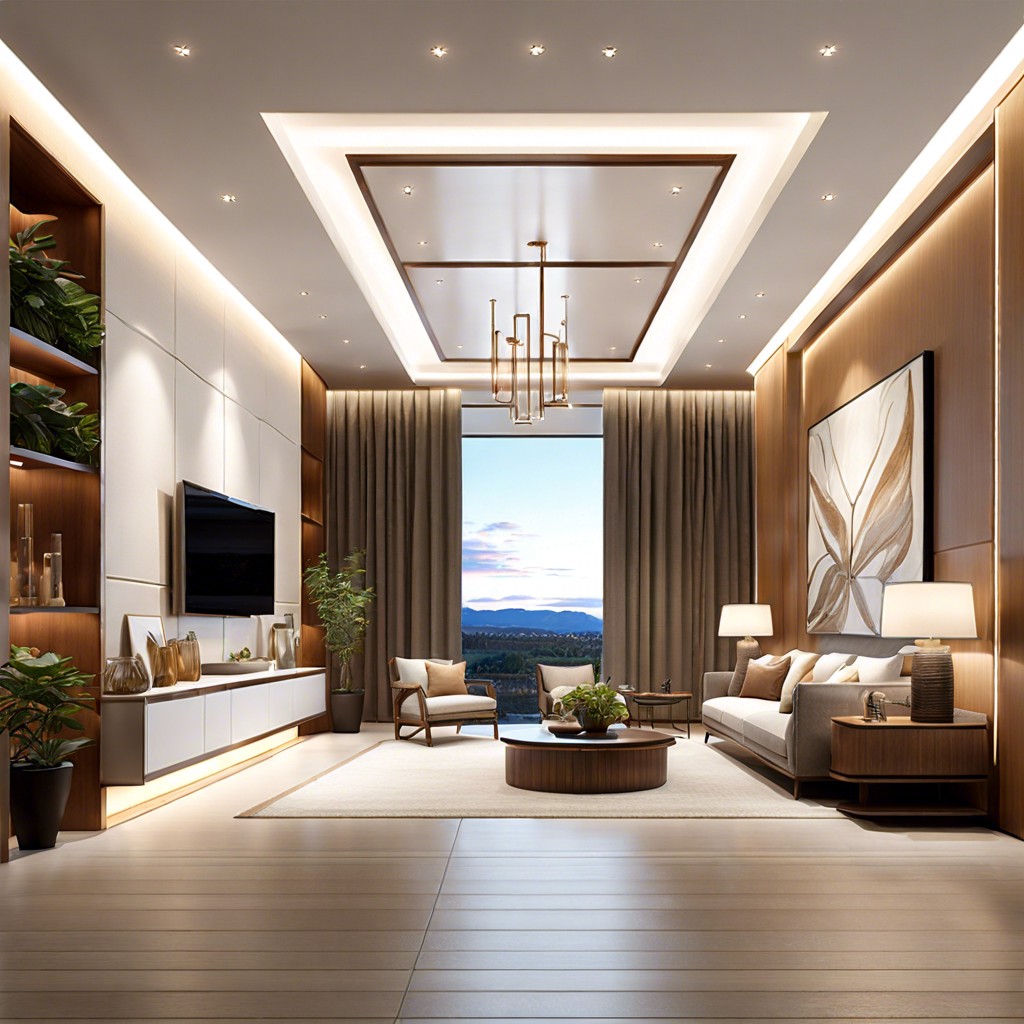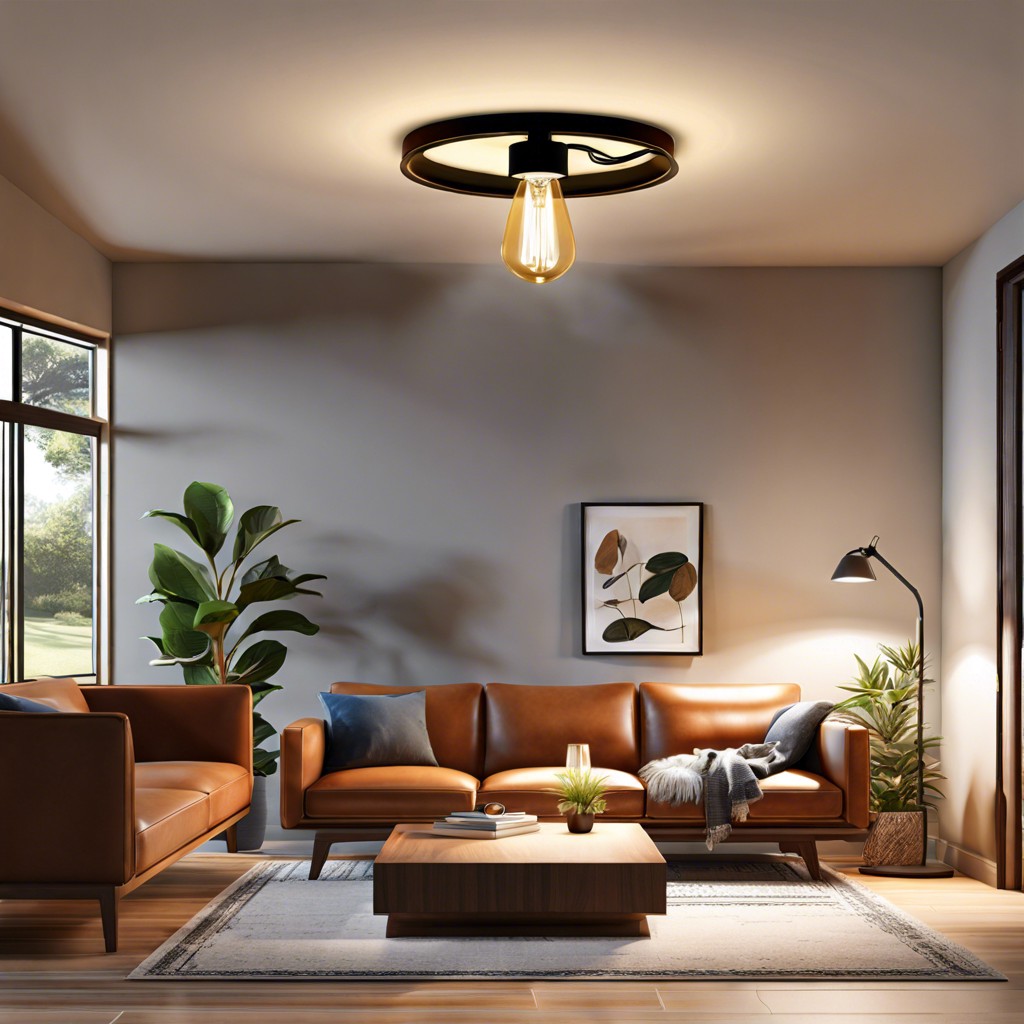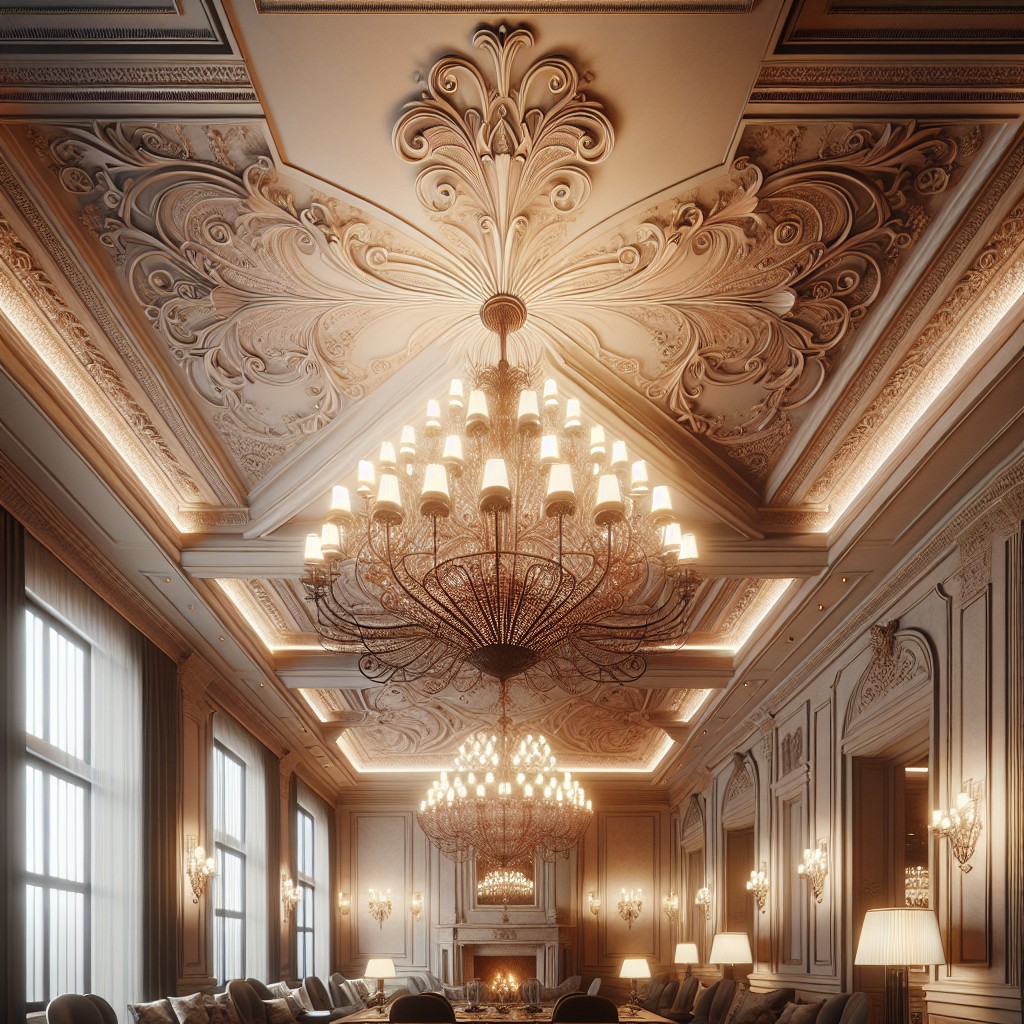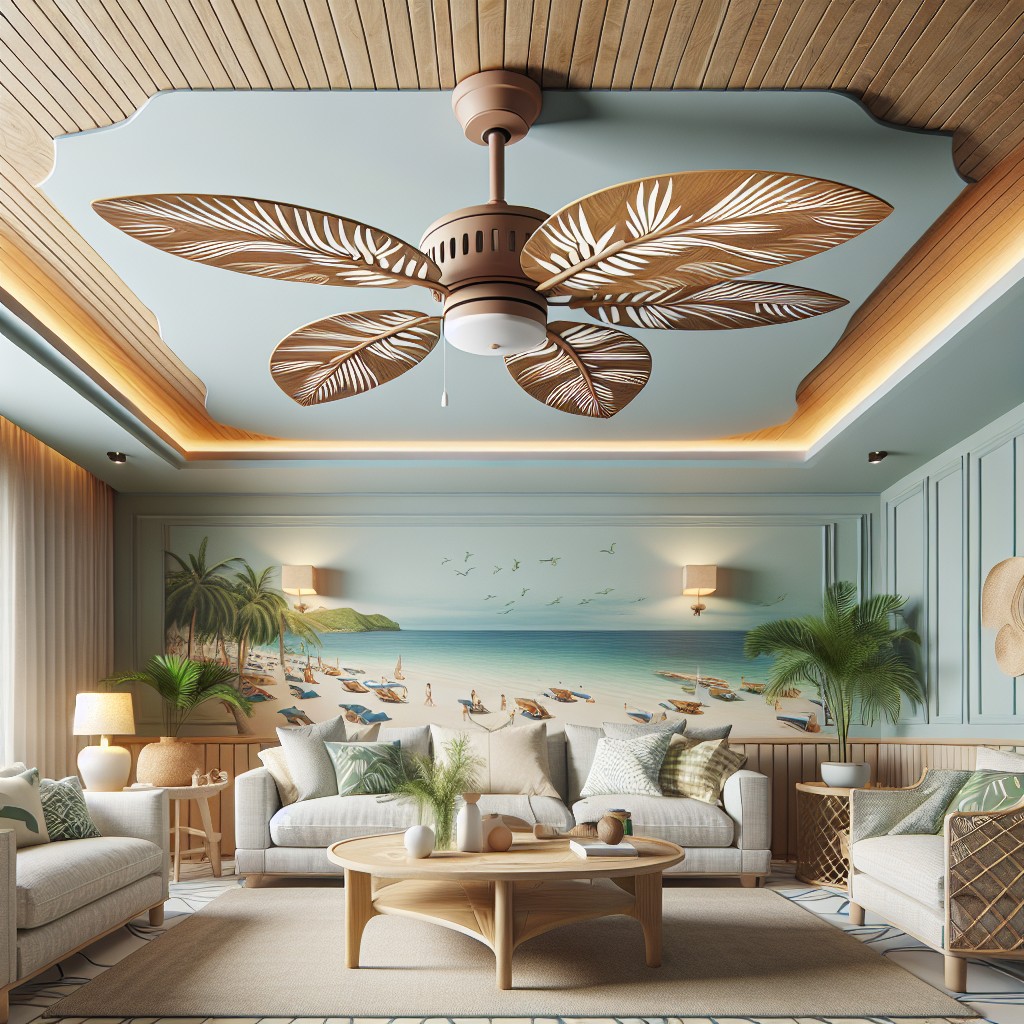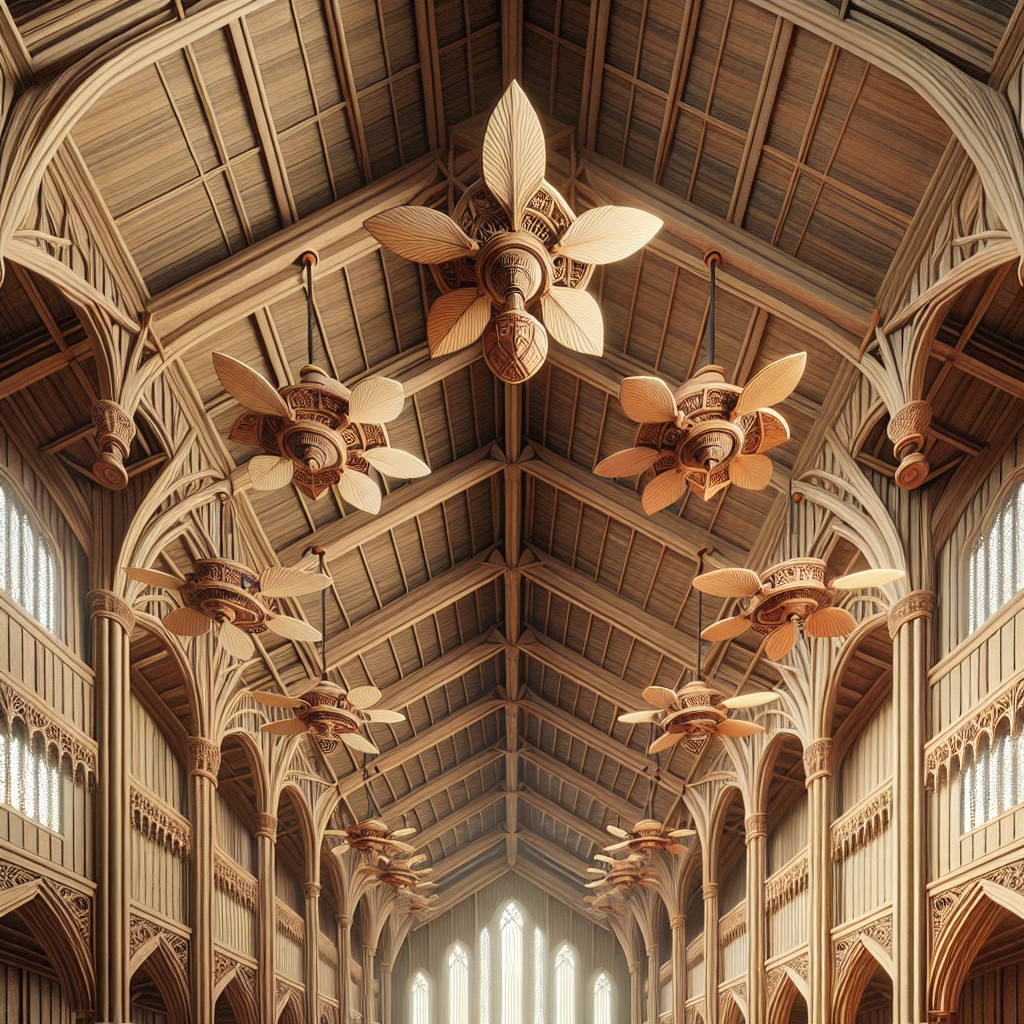Last updated on
Discover the impressive longevity of non-replaceable LED lights because these energy-efficient marvels offer certain advantages that will certainly pique your interest.
Non-replaceable LED lights ensure a long life span that leaves traditional incandescent bulbs way behind: they can illuminate your space for anywhere between 20,000 to 50,000 hours.
Yes, you read it correctly. That’s at least 40 times longer than the average incandescent and means if you use your LED lights for 5 hours a day, they could potentially last anywhere from 11 to 28 years.
Unbelievable, right? But there’s more to it, and factors such as potential watt usage, initial costs, and energy efficiency also play into analysis.
Read on to discover all the comprehensive details about non-replaceable LED lights and their workings.
Key takeaways:
- Non-replaceable LED lights last 20,000 to 50,000 hours.
- Factors like watt usage and environment affect LED lifespan.
- LED lights are energy-efficient and convert 95% of energy to light.
- Factors like quality, fitting, and temperature influence LED longevity.
- Dispose of faulty LED lights at designated electronic waste recycling facilities.
What's Inside
Understanding Non-Replaceable LED Lights

Non-replaceable LED lights, as the name suggests, are lighting fixtures where the LED component is intricately built into the fixture, eliminating the need for bulb replacements. Having integral LEDs means the entire light fixture is designed to deliver specific light output and color quality, offering a seamless lighting experience.
Manufactured in various shapes, sizes, and designs, these lights present the advantage of efficient energy usage and a visually pleasing aesthetic. However, once the LED reaches its end of life, the whole fixture must be replaced. Although the initial cost might be higher, the long lifespan substantially balances out the expenditure.
The longevity of these light fixtures, however, depends on multiple factors. Understanding these crucial aspects is key to managing expectations and properly maintaining these LED lights.
Lifetime of Non-Replaceable LED Lights

Non-replaceable LED lights offer longevity unattainable by traditional light bulbs. On average, you can expect these LEDs to last anywhere from 15,000 to 50,000 hours, with some high-quality models stretching up to 100,000 hours. To put that into perspective, if you were to use your lights for about 8 hours each day, they would potentially last more than 10 years. Impressive, right?
This extended lifespan is due to the efficiency of LED technology. They use less energy and emit less heat, reducing wear and tear on the light’s internal components. However, it’s essential to note that several factors, such as the light’s operating environment and usage habits, can influence this lifespan. For instance, lights in a hot or cold extreme environment may not last as long, as extreme temperatures can stress the LEDs. Also, if the lights are frequently turned on and off, they may wear out sooner.
Finally, remember to check the manufacturer’s estimated lifespan. This information will give you a benchmark to gauge your LED light’s expected performance and longevity.
Factors Influencing the Longevity of LED Lights
While LED lights generally have a long lifespan, several factors can influence how long they last.
Firstly, the quality of the components plays a crucial role. High-quality chips emit more light and resist heat better. Cheaply made LEDs may provide oddly colored light and burn out quickly.
Secondly, proper fitting is important. If LED lights are not fitted properly, they may flicker, dim, or die prematurely.
Also, the operating temperature of the LED light can be a significant factor. When exposed to higher ambient temperatures, LEDs can overheat, leading to failure. A well-designed LED light has heat-dissipating elements to overcome this issue.
Other factors include operating voltage and current, handling, and maintenance, driving scheme, and application design. Each of these plays a role in determining how long your non-replaceable LED light will perform its tool.
Remember to consider these points when buying and installing your LED lights. It will not only help prolong their life but also ensure you enjoy efficient and high-quality illumination.
Understanding Lumen Depreciation
With time and use, all lights experience a decrease in brightness, a process known as lumen depreciation. In fact, the longevity of LED lights is often determined not by when they fail to work completely, but when their brightness reduces to 70% of the original output, designated as L70. This L70 benchmark, acclaimed in the lighting industry, informs users about the typical lifespan of their non-replaceable LED lights.
The rate of lumen depreciation is largely impacted by the quality of components used, primarily the LED chip and the driver. Superior quality components can help maintain brightness levels longer. Additionally, operational heat is a significant factor affecting lumen depreciation. Ideally, LED lights should be used in cool environments for longevity and a consistent performance. If your lights are positioned in a hot environment, consider investing in LEDs designed specifically for higher temperatures, exhibiting slower lumen depreciation rates.
Energy Efficiency of Non-Replaceable LED Lights
Compared to traditional lighting methods, non-replaceable LED lights are more energy-efficient. Their inherent design allows them to convert 95% of their energy into light, with a minimal 5% wasted as heat. This is a marked improvement over conventional bulbs, which often invert that proportion.
Additionally, these LED lights consume less power, usually measured in watts. They could provide the same lumen output as a traditional 60-watt incandescent bulb while only using about 10 watts of energy. As a result, LED lights bring considerable savings on electricity bills and reduce the overall impact on the environment.
Adjustable brightness settings on some LED models further enhance energy efficiency. While dimming the lights, you save energy and prolong the lifespan of the lights simultaneously. However, it’s essential to confirm whether your LED lights support dimming before adjusting the brightness to avoid any potential damage.
Advantages and Drawbacks of Non-Replaceable LED Lights
On the upside, non-replaceable LED lights are renowned for their long lifespan. These energy-efficient bulbs can illuminate your spaces for an impressive 15,000 to 50,000 hours. That’s 15-50 times longer than the old-fashioned incandescent bulbs!
Plus, they’re maintenance-free, meaning you won’t be dealing with regular bulb changes. The fact that they consume less energy, compared to traditional light sources, makes them an eco-friendly and cost-effective lighting solution.
However, nothing is perfect. One significant downside is that once the light dies, you have to replace the entire fixture. This could be costly, especially for high-end lighting units. Also, faulty built-in LEDs can’t be changed individually, which might lead to an unexpected blackout, despite other LEDs in the array working perfectly fine. Lastly, certain fixtures with built-in LEDs may not be dimmable, limiting your ability to create different moods and settings in a room.
Remember, knowledge is power. By understanding these pros and cons, you can make informed decisions when light shopping. Now, let’s talk about how to prolong these lights’ lifespan. Shall we?
Maintenance Tips for Prolonging LED Lifespan
Proper ventilation is paramount in preserving the lifespan of non-replaceable LED lights. Heat buildup can severely compromise LED functionality, so always ensure there’s ample air circulation around the lighting fixtures.
Utilizing a dimmer can extend the bulb’s life, as LEDs tend to last longer when used at less than full brightness. However, make sure the specific model is dimmable, as not all LEDs are designed to be used with dimmers.
Avoid turning the lights on and off frequently; constant power cycles can hasten the degradation of the LED elements. It’s better to leave them on for longer periods than to repeatedly switch on and off.
Keeping your lights clean also has a part to play. Dust and dirt can cause darker lighting, forcing you to turn up the brightness and put extra stress on the LEDs. Regular cleaning reduces this risk and keeps your lights shining for longer.
Lastly, stay informed about the average operating hours of your specific bulb. Overuse is a significant culprit in shortening an LED light’s life. Knowing the manufacturer’s recommended usage time can guide you in maintaining a balance between efficiency and longevity.
Dealing With Defective Non-Replaceable LED Lights
When faced with a defective non-replaceable LED light, it’s essential to handle the situation with caution. First, have a qualified electrician confirm the fault; it may be as simple as a loose connection. If the fixture is confirmed defective, the entire unit is typically replaced, as the LED components are integrated into it. Be sure to choose a reputable brand during replacement to lessen the chances of early failure. Also consider warranties—purchasing units with excellent warranty coverage ensures trade-offs if defects occur in the future. While it may come off as more expensive initially, it saves on the long-term costs of frequent replacements.
Disposal of Defective LED Lights
Great care must be taken when disposing of defective non-replaceable LED lights. Unlike traditional light bulbs, LEDs contain electronic components that can harm the environment if not properly discarded.
Many local and city waste facilities offer recycling programs where these lights can be deposited. Another excellent option is local recycling events that often accept various electronic waste, including LEDs.
For bulk disposal, you may contact manufacturers or recycling companies to assist. Always remember, proper disposal not only helps preserve our environment but also conserves resources by recycling valuable components found within the LED light assembly.
Be environmentally proactive and choose recycling or safe disposal methods whenever possible. It’s not just good housekeeping; it’s good citizenship.
Difference Between Non-Replaceable and Replaceable LED Lights
In the world of LED lights, one key distinction lies in the type of unit: non-replaceable or replaceable.
Non-replaceable LED lights, often found in fixtures, have the diodes integrated into the unit. This means once the light has reached the end of its life cycle, the entire fixture needs to be replaced. Offering seamless design and lower upfront costs, they’ve grown popular in modern, minimalist setups and are ideal for those who like to avoid the hassle of regular bulb replacement.
On the other hand, replaceable LED lights have separately replaceable bulbs and fixtures. When the light fades, you simply buy a new bulb instead of replacing the entire fixture. While slightly more expensive initially, in the long run, these can be more economical. Particularly suited to those who prefer flexibility, they allow for easy swapping of light color, temperature, and brightness by just changing the bulb.
Both types offer a variety of shapes, sizes, and use-cases. Your choice will depend on your personal preference, cost consideration, and aesthetic requirements.
What to Do With a Faulty Light?
In the event your non-replaceable LED light malfunctions before the end of its expected life, there are a few steps to handle the situation effectively.
Firstly, check the warranty. Many manufacturers provide a warranty period during which they replace or repair faulty LED lights at no cost.
In cases where the warranty no longer applies or the manufacturer can’t provide assistance, you may opt to seek help from a professional electrician. They can accurately diagnose the problem and may possibly fix the light fixture.
When professional help is too costly or if the fixture cannot be repaired, the last course of action is disposal. However, it’s essential to remember these lights contain electronic components. Therefore, they should be disposed of at designated electronic waste recycling facilities to ensure eco-friendly disposal. This step ensures harmful components won’t leach into the environment, reinforcing our commitment to a green planet.
Remember, safety should always be paramount. Ensure the power is switched off at the circuit breaker before attempting any troubleshooting or removal tasks.
FAQ
How long do non replaceable LED bulbs last?
Non-replaceable LED bulbs typically boast a lifespan of up to 50,000 hours, translating to up to 10 years without requiring replacement.
How long do permanent LED lights last?
Permanent LED lights tend to start failing at around four years and you could expect a few of a 200-light installation not working by year six or seven.
Why are LED bulbs not replaceable?
LED bulbs are non-replaceable because they are integrated and manufactured within the lamp, preventing the light source from being removed and replaced.
What is the lifespan of integrated LED lights?
Integrated LED lights have an impressive lifespan of up to 50,000 hours, translating to about 15 to 20 years of regular use, markedly outliving alternatives like incandescent bulbs which have roughly a 1,000-hour lifespan.
Can the brightness of non-replaceable LED lights decline over time?
Yes, the brightness of non-replaceable LED lights can decline over time due to the process known as lumen depreciation.
What factors can influence the lifespan of integrated LED lights?
The lifespan of integrated LED lights can be influenced by factors such as usage habits, quality of the light fixture, ambient temperature, and electrical voltage stability.
How does the use of non-replaceable LED lights impact energy efficiency?
Non-replaceable LED lights improve energy efficiency as they consume less energy and last longer than traditional lighting solutions.
